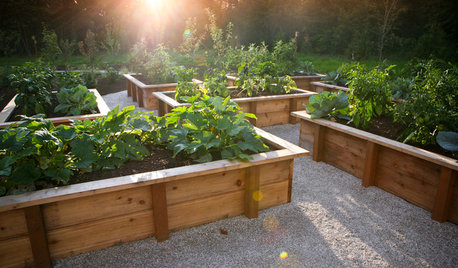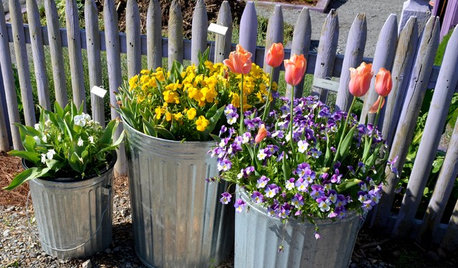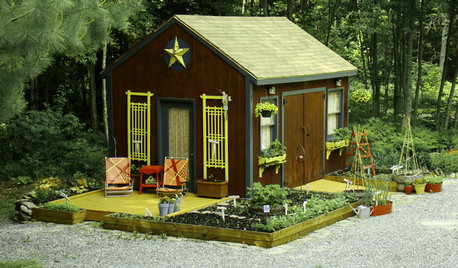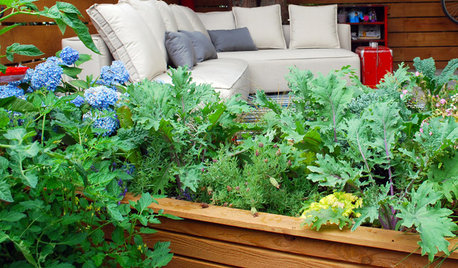alternatives to pressure-treated wood for raised vegetable beds?
arauquoia
10 years ago
Related Stories

GARDENING GUIDES8 Materials for Raised Garden Beds
Get the dirt on classic and new options for raised vegetable and plant beds, to get the most from your year-round garden
Full Story
GARDENING AND LANDSCAPINGBuild a Raised Bed to Elevate Your Garden
A bounty of homegrown vegetables is easier than you think with a DIY raised garden bed to house just the right mix of soils
Full Story
GARDENING AND LANDSCAPINGRaised Beds Lift Any Garden
From good old-fashioned wood garden boxes to modern metal troughs, raised beds can make any landscape space look great
Full Story
FARM YOUR YARDAdvice on Canyon Farming From L.A.'s Vegetable Whisperer
See how a screened garden house and raised beds help an edible garden in a Los Angeles canyon thrive
Full Story
FARM YOUR YARDHow to Build a Raised Bed for Your Veggies and Plants
Whether you’re farming your parking strip or beautifying your backyard, a planting box you make yourself can come in mighty handy
Full Story
EDIBLE GARDENSSee How a Practical Garden Can Be a Visual Treat, Too
A university edible garden overflows with ideas for growing produce and flowers in containers, beds — or a pickup truck
Full Story
GARDENING GUIDESGarden-Friendly Native Alternatives to Overplanted Exotics
There are lots of gorgeous, wildlife-friendly native plants ready to make an appearance in your garden
Full Story
GARDENING AND LANDSCAPINGDig This Garden Shed Makeover for Less Than $300
New paint, accessories and raised vegetable beds turn a drab outpost into a colorful charmer
Full Story
GARDENING GUIDESStep Right Outside for Fresh Herbs and Vegetables
Decks and patios can be convenient spots for edibles, and sometimes they even offer advantages over backyard gardens
Full Story
FARM YOUR YARDCool-Season Vegetables: How to Grow Beets
Give canned versions of this fall and spring garden favorite the heave-ho and discover its true flavor and colors
Full Story






MikePj
gardenlen
Related Professionals
Seabrook Landscape Architects & Landscape Designers · Aurora Landscape Contractors · Waterbury Landscape Contractors · Gaithersburg Landscape Contractors · Hayward Landscape Contractors · Indianapolis Landscape Contractors · New Providence Landscape Contractors · Point Pleasant Landscape Contractors · Riverhead Landscape Contractors · Streamwood Landscape Contractors · Sugar Hill Landscape Contractors · Woodbury Landscape Contractors · Selma Landscape Contractors · Chattanooga Driveway Installation & Maintenance · Rehoboth Driveway Installation & Maintenancedigdirt2
seysonn
shermthewerm
ejdiv
Kevin Reilly
ejdiv
Kevin Reilly
shermthewerm
mckenziek
seysonn
ejdiv